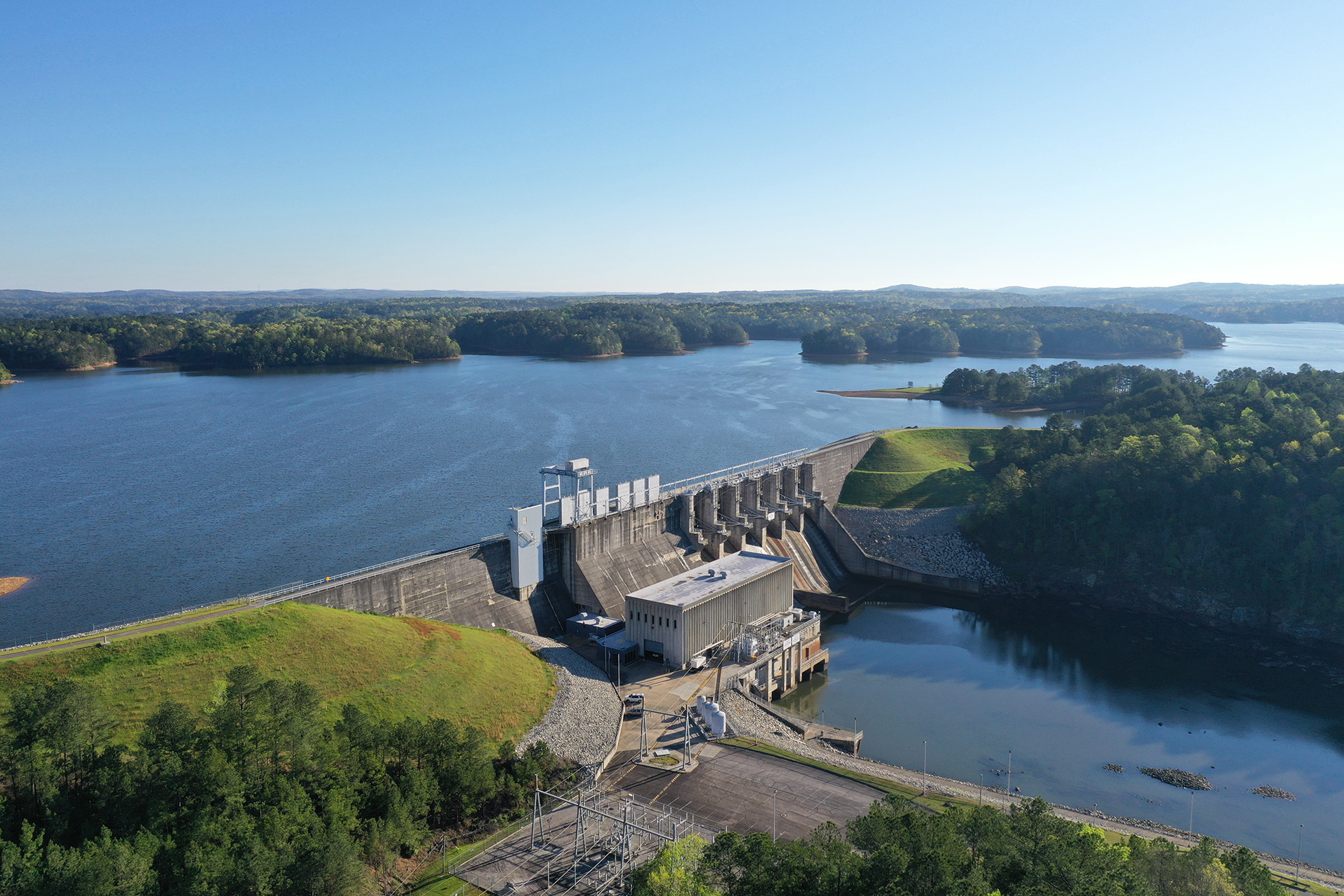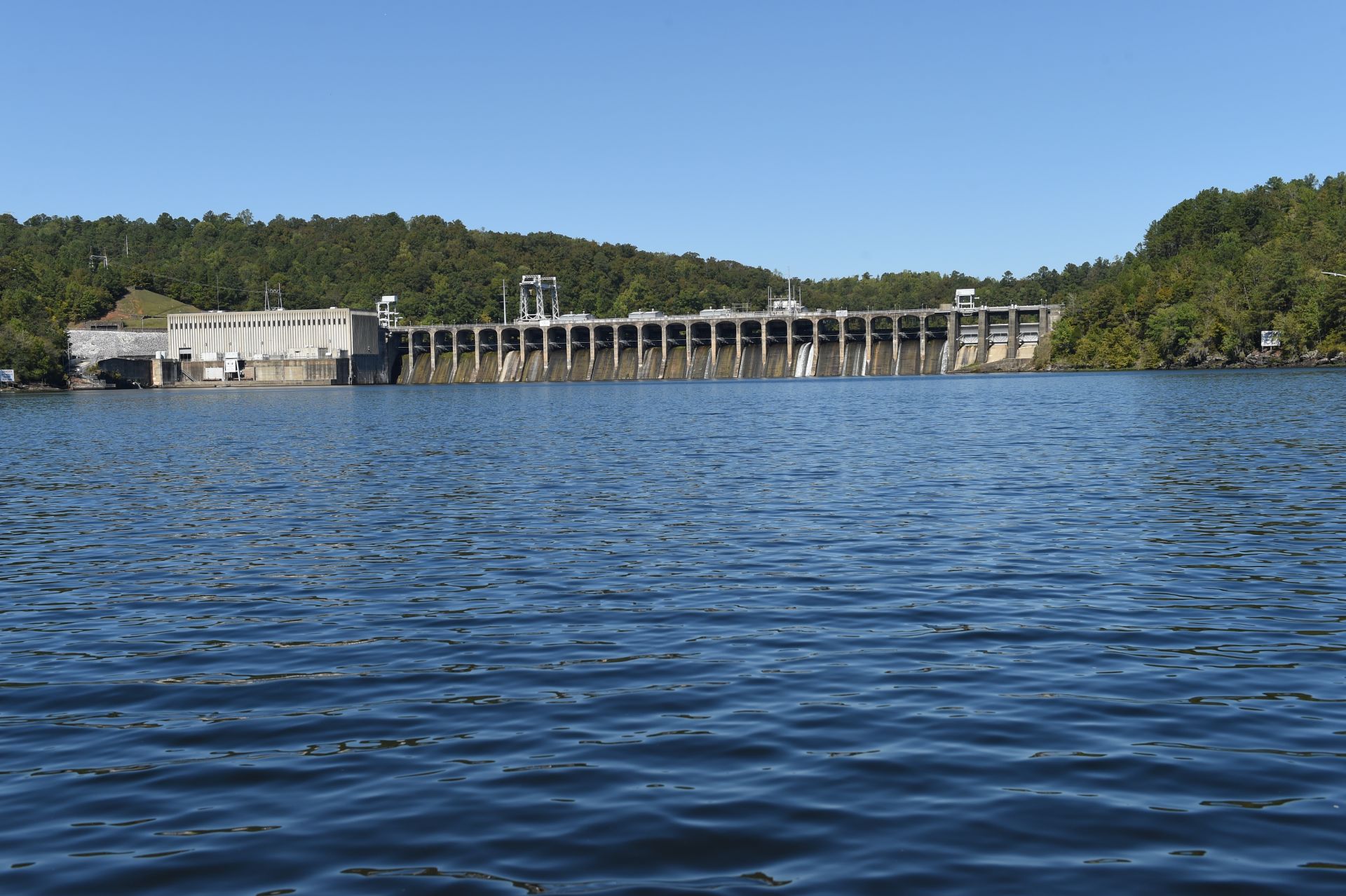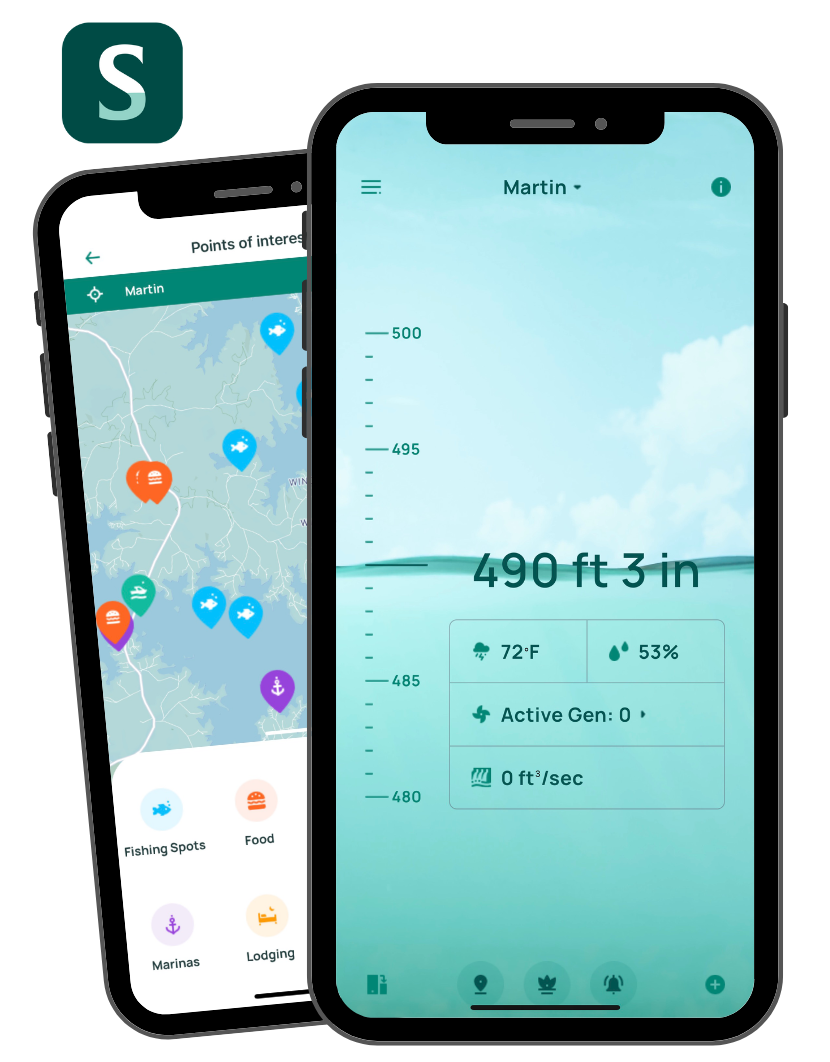Trophy-sized striped bass lurk in the waters of Lake Martin.
Alabama’s waters are teeming with a vast variety of fish species and anglers from across the globe flock to area waters to catch their limit. Few experiences, however, offer a bigger fight or bigger reward than trophy hunting striped bass, and many of these prolific fighters call Alabama’s lakes and rivers their home.
Weighing up to 70 pounds, these elusive heavyweights offer a challenge to even the most seasoned anglers. Reeling in a trophy-sized striper makes for a memorable story, good eats and a photo with a wide-angled lens.
Striped bass (Morone saxatilis) are found throughout Alabama’s rivers and lakes. The individual record is a 70-pounder caught in 2013 on the Black Warrior River near Gorgas Steam Plant. Lewis Smith Lake is known for having the most fish, but Lake Martin is where trophy fish are typically caught.
Many weighing in between 20 and 30 pounds, stripers are always on the move and school in large numbers hunting their meals. They often feed near the surface during spring and fall, but go deeper during the summer seeking cooler waters.
Stripers feed in short bursts that can last only a few minutes. They’re unpredictable and can be difficult to catch, oftentimes here one minute and gone the next. Stripers most actively feed at dusk, dawn and throughout the night and prefer shad as their main source of food. They push their food to the surface before eating, a practice called “boiling” because the water appears to be bubbling. A keen angler will look for these signs and cast near the action.
Capt. David Hare, owner of Alex City Guide Service, specializes in live bait fishing for trophy-size stripers and is based out of Lake Martin. He has many years of experience leading guided trips for clients and hunts stripers on Lake Martin every day. Hare has his own proven method of trolling for the prized fish in his center-consoled fishing boat. But he says stripers can be caught from the land using top bait, white or yellow jigs, spoon lures or fly-fishing techniques.
Hare loads his live well with shad and redhorse suckers (Moxostoma carinatum) as bait and trolls the lake at 1 mile per hour. “Stripers really like the shad, but I call redhorse suckers ‘striper candy,’” Hare says.
Keeping a watchful eye on his Humminbird fishfinder, Hare sets out two lines on each side of the boat and several more across the stern. Panelboards keep the bait spread out from the sides of the boat at 30 and 45 feet.
Hare uses 20-pound monofilament line and circle hooks for best results.
Hare spends many hours on the lake searching for the best locations, and says you need to know the fish to predict where they want to be.
“You have to go where the fish are most comfy,” Hare says, noting that stripers can be caught year-round if you look for higher oxygen levels and more adaptable temperatures in different seasons.
The Alabama Department of Conservation and Natural Resources (ADCNR) keeps a watchful eye on the state’s striper population as it is responsible for the conservation and management of Alabama’s natural resources, including state parks, lands, wildlife and aquatic resources. Each year, ADCNR stocks the lakes and rivers with striper fingerlings to help maintain the population.
Brian Rinehard, supervisor at the Eastaboga Fish Hatchery, is an expert on the species and has been on the job for 13 years, hatching fry and releasing several types of fish into the waterways.
“We released 160,000 1- to 2-inch striped fingerlings on Lake Martin and 752,860 statewide in 2015,” says Rinehard. “We release on the entire Coosa River except Lake Weiss, the entire stretch of the Tallapoosa and on Smith. We don’t stock on the Tennessee River, and mainly release from public boat ramps and state-owned access points.”
Rinehard and his team also collect samples and breeding fish to produce more stock. “Stripers grow fast their first few years,” Rinehard says. “Then they taper down. It may take 10 to 15 years for a striper to grow to a 30-pound trophy size. Our stomach content research shows stripers eat almost 90 percent shad, and I suggest looking for natural springs and cooler waters during the summer.”
With a little knowledge and the right gear, anglers can have an enjoyable day hunting the elusive striped bass. They are prolific hunters and not easily caught, but the satisfaction of landing a trophy-sized specimen can last a lifetime. For more information, visit ADCNR’s Outdoor Alabama website or the Alex City Guide Service to book your next trip.
– Grant Musgrove















